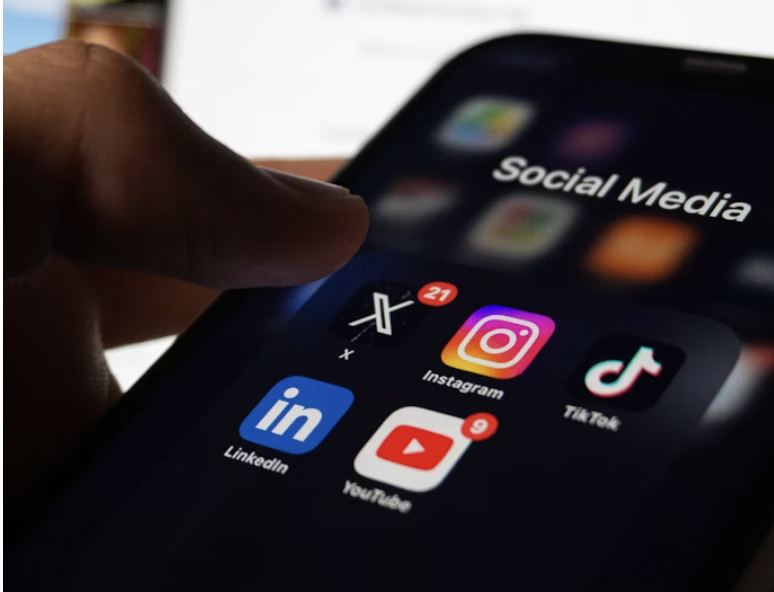
Social media makes it easier than ever for teens to be exposed to violent and disturbing content. Photo by Berke Citak via Unsplash.
On Sep. 10, 2025, activist Charlie Kirk was assassinated while speaking at an event at the University of Utah. Following the attack, video of the shooting went viral across several social media platforms such as Instagram, TikTok, X (formally Twitter), and YouTube.
Many people who are regular social media users were saw the video without consent due to lack of content warnings on the viral video. The question for many across the country is simple: how is this attack impacting teens and are they becoming desensitized to videos like these overall?
Although many videos on platforms that show graphic content sometimes have a warning, many of the videos of Kirk did not. However, even with the content warning, it is still insensitive to spread the video around social media, considering how Kirk’s family may feel about it. This also shows that people can be insensitive on the internet because some people really don’t care about the person’s death.
This incident is a big deal on its own, but it also shows something deeper; how comfortable people have gotten with spreading graphic videos online, even on platforms where teens and kids spend most of their time. It honestly doesn’t matter how old you are because watching something that violent is traumatizing no matter what.
According to a report from PBS, many users online posted about Kirk’s death in a way to push activism against violence, but still shared the clip in their posts. This caused the video to be shared at “lightening speed,” without any warning or restriction for children.
Many teenagers have seen the video, even if they weren’t expecting it. For example, friends sending the video to other friends, or it just suddenly popping up on their feed because it is a huge, trending topic that has been on people’s “for you pages.”
“I have seen the Charlie Kirk video,” said Kaylee, a Cardozo student. “Honestly, I thought it was really concerning to look at. I felt uncomfortable watching it and I only watched it out of curiosity.”
“I let my curiosity get to me sometimes, it’s bad,” she added.
When people watch certain videos on their social media platforms, their algorithm changes to bring forward more videos that are similar. This is a problem, because when violence is all over your social media feed, at a certain point, people will stop being phased by it. Users become used to it, and even watching those types of videos becomes an addiction for some people; especially teens.
“I did not intend to watch the full video,” Tabinda, another student, explained. “But after that one part where it all happened, I immediately clicked off.”
This demonstrates that people feel really uncomfortable watching the video, and if it had not appeared on their feed, they may not have watched it at all but instead just heard about it. Many parents are concerned with social media use during these kind of incidents, because they are left to deal with the repercussions.
While parents cannot always stop what is shared on social media, they can speak to their children about what to do when they see this type of content, or, put parental restrictions on their accounts to prevent this from happening altogether.
As for teens, social media companies need to be better at putting warning signs on videos with violence so that users can avoid them if they choose.